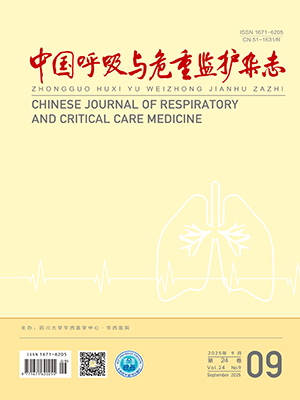【Abstract】 Objective To explore the clinical value of vibration response imaging ( VRI) in patients with chronic obstructive pulmonary disease ( COPD) . Methods 255 COPD patients and 78 healthy volunteers were enrolled and lung function test and VRI examination were performed. The parameters of VRI included dynamic image grades, vibration energy graph grades, vibration value, quantitative lung data ( QLD) of right lung, and crack counts. Results The VRI parameters of the COPD group were as follows, ie.dynamic image grades of 3. 07 ±1. 34, graph grades of 7. 81 ±3. 27, vibration value of 1. 57 ±0. 46, QLD of( 49. 5 ±12. 6) % , crack counts of 5. 27 ±7. 74. The VRI parameters of the control group were as follows, ie.dynamic image grades of 1. 14 ±1. 00, graph grades of 2. 24 ±1. 27, vibration value of 1. 87 ±0. 40, QLD of
( 44. 0 ±7. 7) % , crack counts of 0. 21 ±0. 88. There were significant differences in all parameters between the two groups ( all P lt;0. 05) . There was a linear relationship between VRI and FEV1% pred ( r = 0. 548,P lt;0. 01) . The model of the linear regression was Y =80. 833 - 2. 735X1 - 5. 406X2 ( Y: FEV1% pred, X1 :VRI graph grades, X2 : dynamic image grades) . Conclusion VRI is a promising method to diagnose and assess the severity of COPD.
Citation: TAN Yan,SUN Lihua,LIU Yun.. Clinical Value of Vibration Response Imaging in Patients with Chronic Obstructive Pulmonary Disease. Chinese Journal of Respiratory and Critical Care Medicine, 2011, 10(1): 25-29. doi: Copy
Copyright © the editorial department of Chinese Journal of Respiratory and Critical Care Medicine of West China Medical Publisher. All rights reserved




